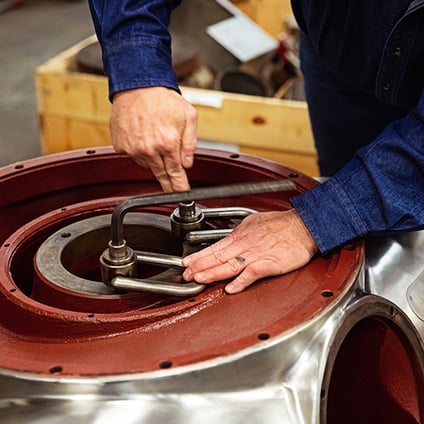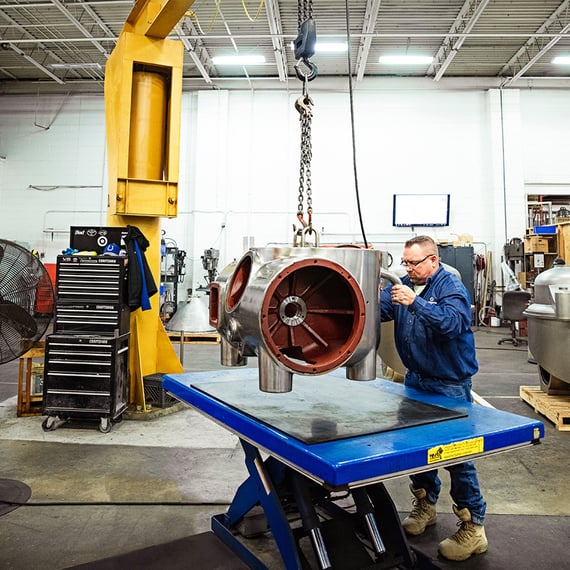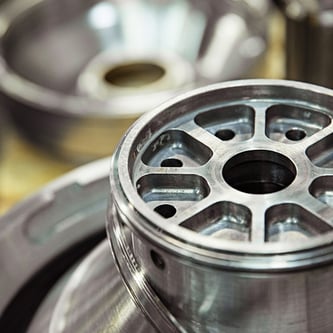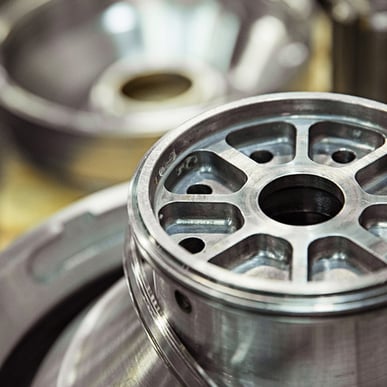Issues in your production line can lead to expensive downtime (and cause major long-term problems). While stopping an issue before it happens is the best way to protect your investments, troubleshooting your operations isn’t always easy.
With a wide variety of parts and mechanisms in your system, it can be hard to pin down the source of your problems. But most often, we see production managers in the separation industry blame the centrifuge. After all, every ounce of product goes through the separator, and it’s the largest, most intricate part of the entire system. If there’s a problem with your batches, something must be wrong with the centrifuge...right?
In reality, there are quite a few problems (that aren't your centrifuge) that could be the culprit. Before you shell out to replace your costly centrifuge (or damage it beyond repair), take a look at these common “upstream problems” that might be affecting your separator.
Check your feed pump for air bubbles.
 If you think something might be wrong with your centrifuge, check the feed pump for issues. Normally, the balance tank works to pump the product directly into the separator. However, sometimes air can get caught in the tank. This air can make its way through the pump and into the separator.
If you think something might be wrong with your centrifuge, check the feed pump for issues. Normally, the balance tank works to pump the product directly into the separator. However, sometimes air can get caught in the tank. This air can make its way through the pump and into the separator.
You may know this problem by the name air entrainment. Air entrainment is when small air bubbles get trapped in any fluids you’re working with. This can lead to a variety of problems, such as O2 contamination, weight off-setting, and poor separation. These problems only affect the separator itself, so it can be easy to assume that your separator is the source.
On the bright side, this issue is easy to troubleshoot if you know what to look for. Inspect your lines, balance tank, and silos for foam. Foam develops when fluids trap air bubbles below the surface. Use it as a telltale sign that there’s air entrainment in your feed pump.
See if your product stays at the right temperature.
This should go without saying, but your product should never be outside of the recommended temperatures. Depending on what you’re manufacturing, and what centrifuge you’re using, temperature fluctuation can damage your system and contaminate your product.
If you have the proper monitoring equipment, check your product’s temperature at all points of your upstream operation. If you don’t have this sort of equipment, use a temperature probe to test your silo, balance tank, feed pump, and centrifuge for correct temperatures.
If any of these temperatures are not up to code, you may be looking at a few potential causes, including improper storage temperature, insulation problems, and/or miscalculations by your manufacturer or team.

Make sure your flow capacity stays steady.
Your production line runs on any number of precise flow rate calculations, ensuring your separation process is flawless. If someone or something alters these flow rates, it can cause significant damage to your centrifuge over time.
If your pump is underfeeding your centrifuge, the product won’t be able to separate properly, creating imbalances during separation. If your pump is overfeeding, then you could be putting too much pressure on your centrifuge’s compartments.
It’s smart to check your flow meter to ensure accurate flow rates at all points of your upstream operations. Every separator is different, so look over your manufacturer’s guides for their recommendations on proper flow rates.
Verify that the pressure you’re feeding into your system is positive.
Feeding pumps need to be at specific pressures to operate. If you’re having issues with your centrifuge, ensure your pressure rates are on par with the manufacturer's recommendations.
Negative pressure in a pump will create a vacuum in your system. Even if your lines are at the perfect temperature for operation, a vacuum can create temperature fluctuations that are dangerous to your equipment.
To determine if negative pressure is creating vacuums in your production line, you’ll need to use your pressure gauges or transmitters to accurately determine the pressure you’re putting into the system.
Bottom line? You always want positive pressure feeding into your system.
Don’t make an expensive mistake.
 If any (or all) of the problems we listed above are present in your production line, the symptoms may look like centrifuge inefficiency or failure. But that’s not always the case. Keep close tabs on centrifuge maintenance and perform consistent upstream checks to ensure your system is running at its best.
If any (or all) of the problems we listed above are present in your production line, the symptoms may look like centrifuge inefficiency or failure. But that’s not always the case. Keep close tabs on centrifuge maintenance and perform consistent upstream checks to ensure your system is running at its best.
Still stumped? Contact the experts at Separators, Inc. We’ve spent the last few decades learning the ins and outs of separator maintenance. When you partner with us, you’ll be lengthening the lifespan of your equipment and minimizing downtime in your operations. Call today to keep your operations running like clockwork.


